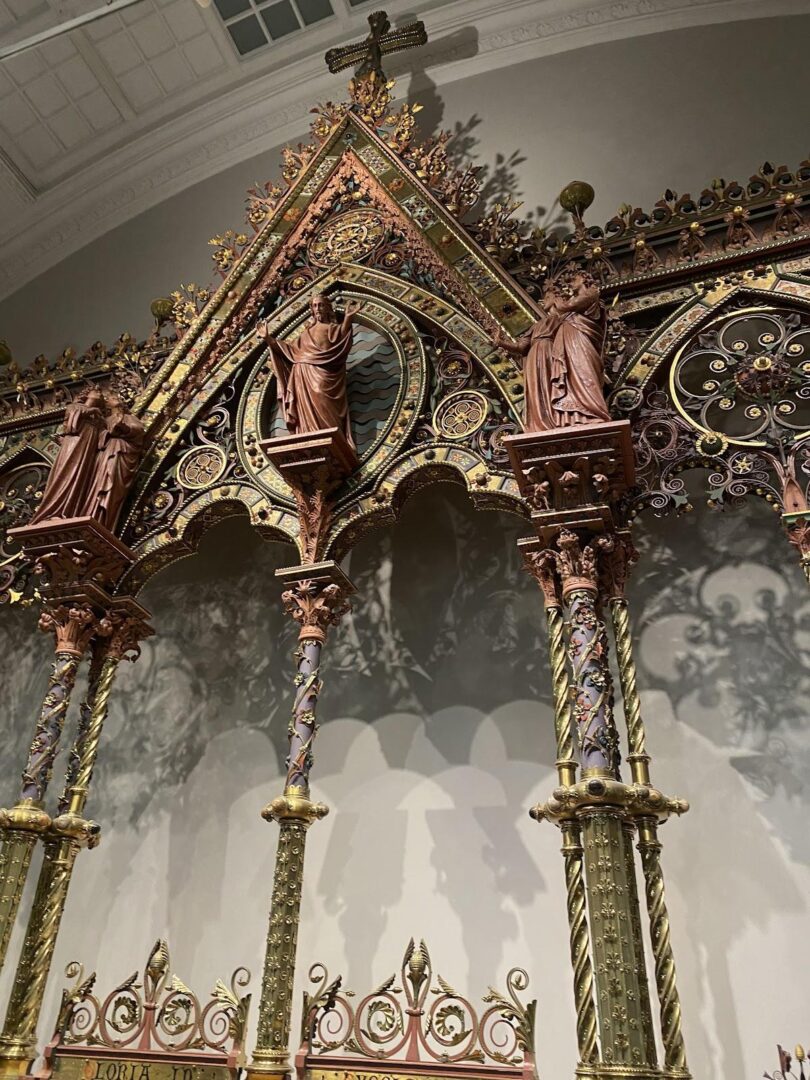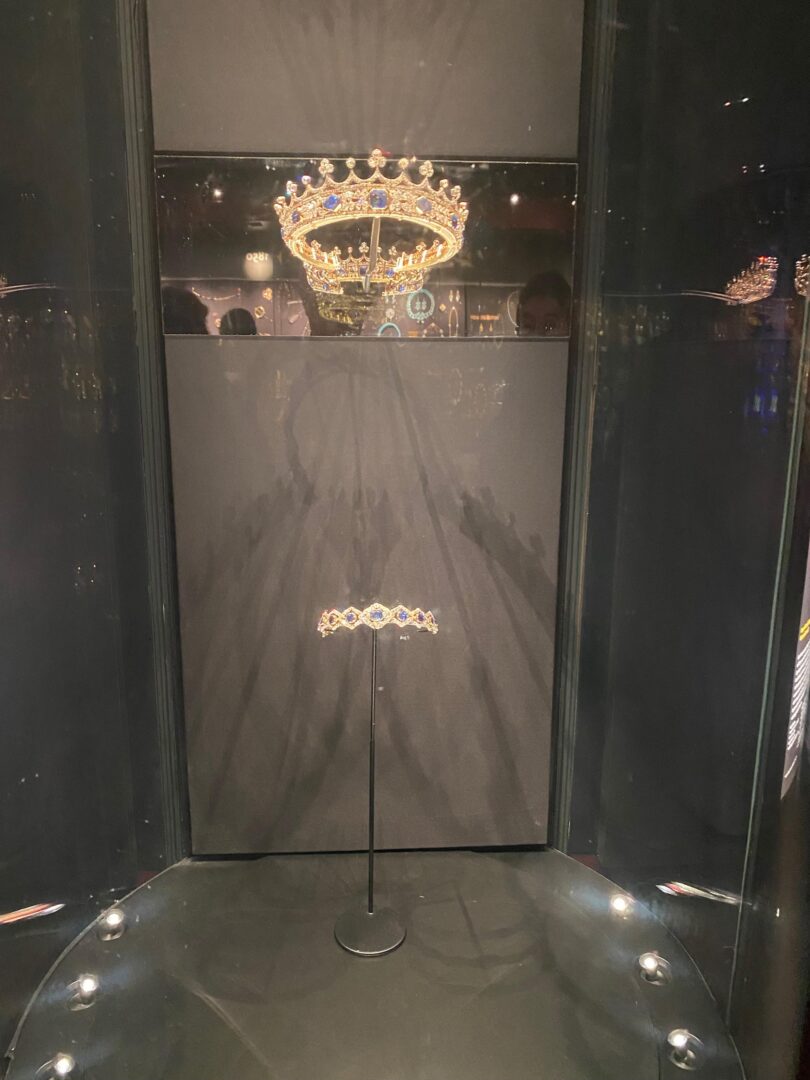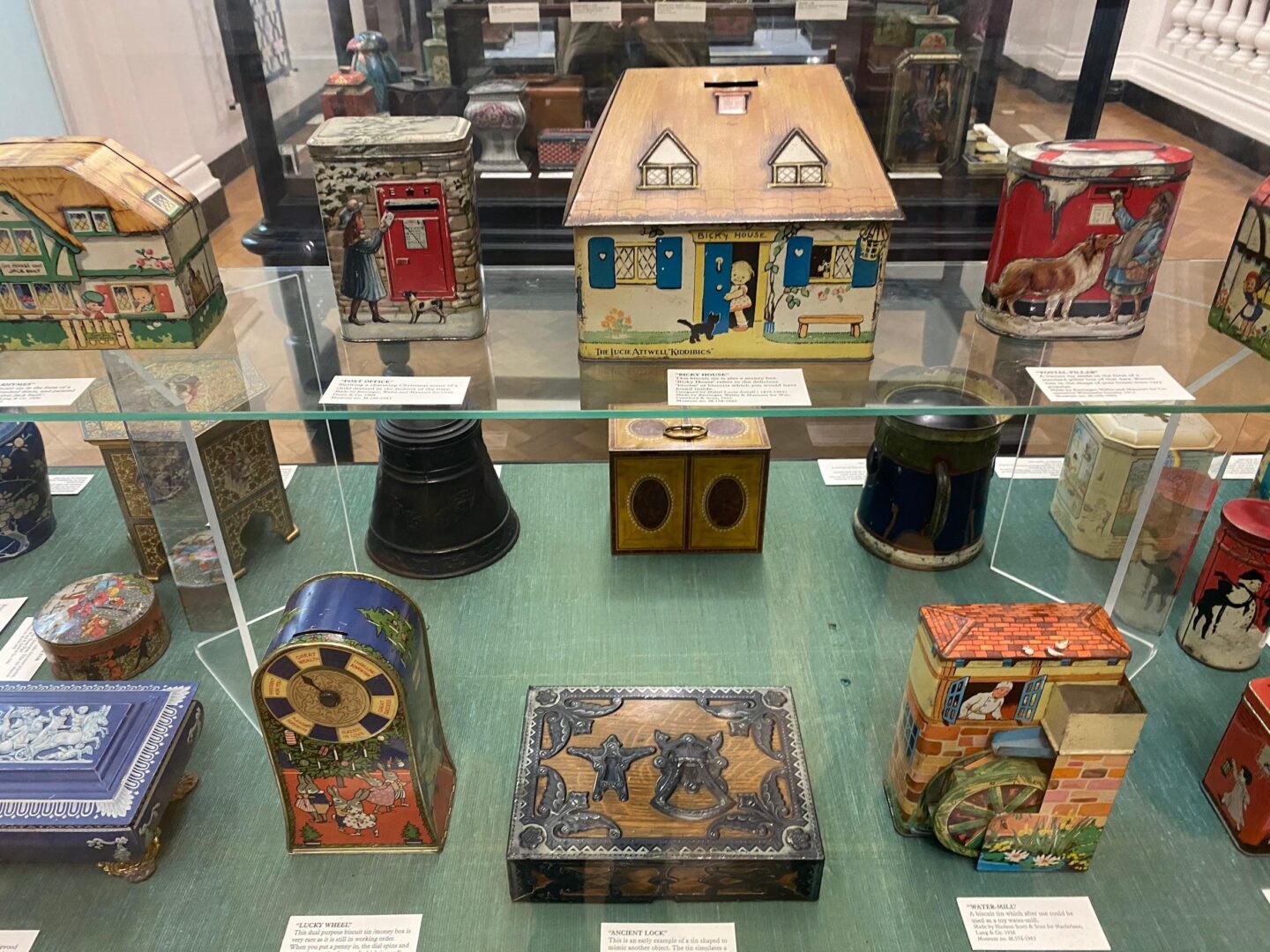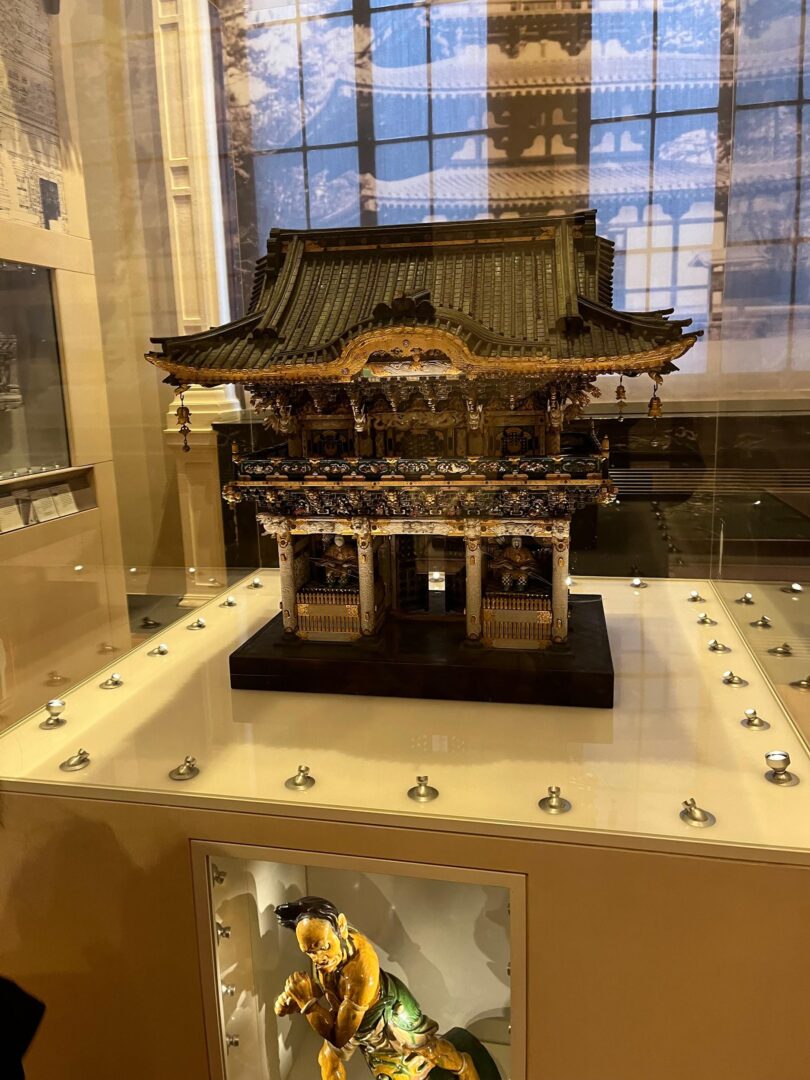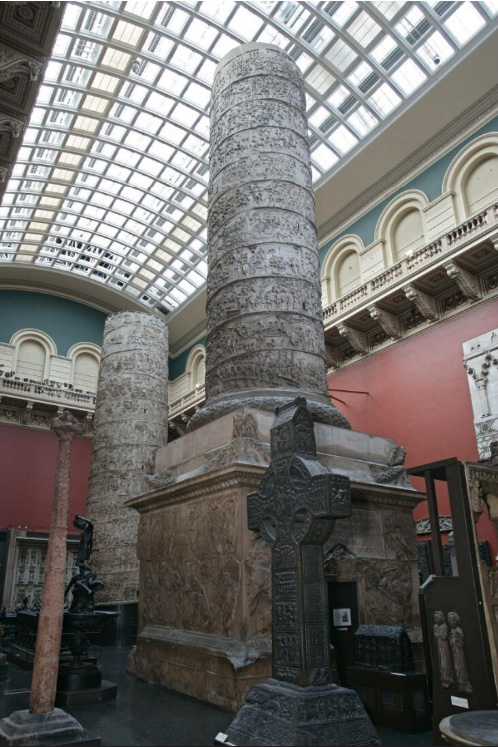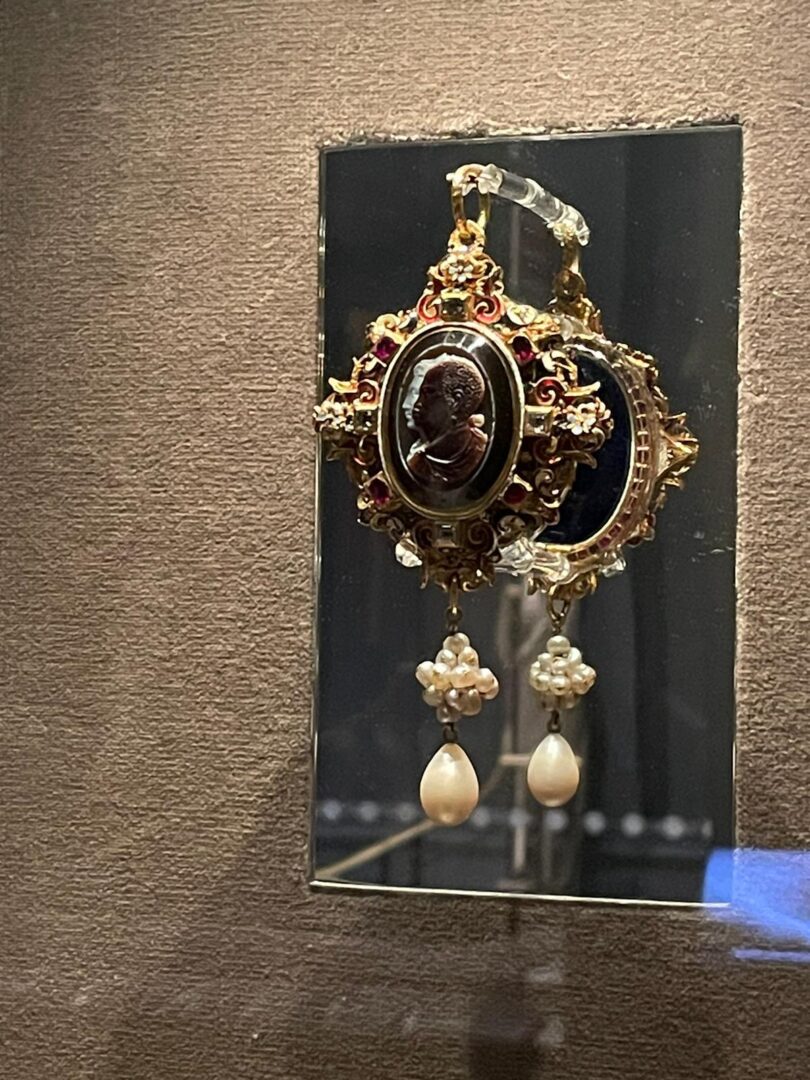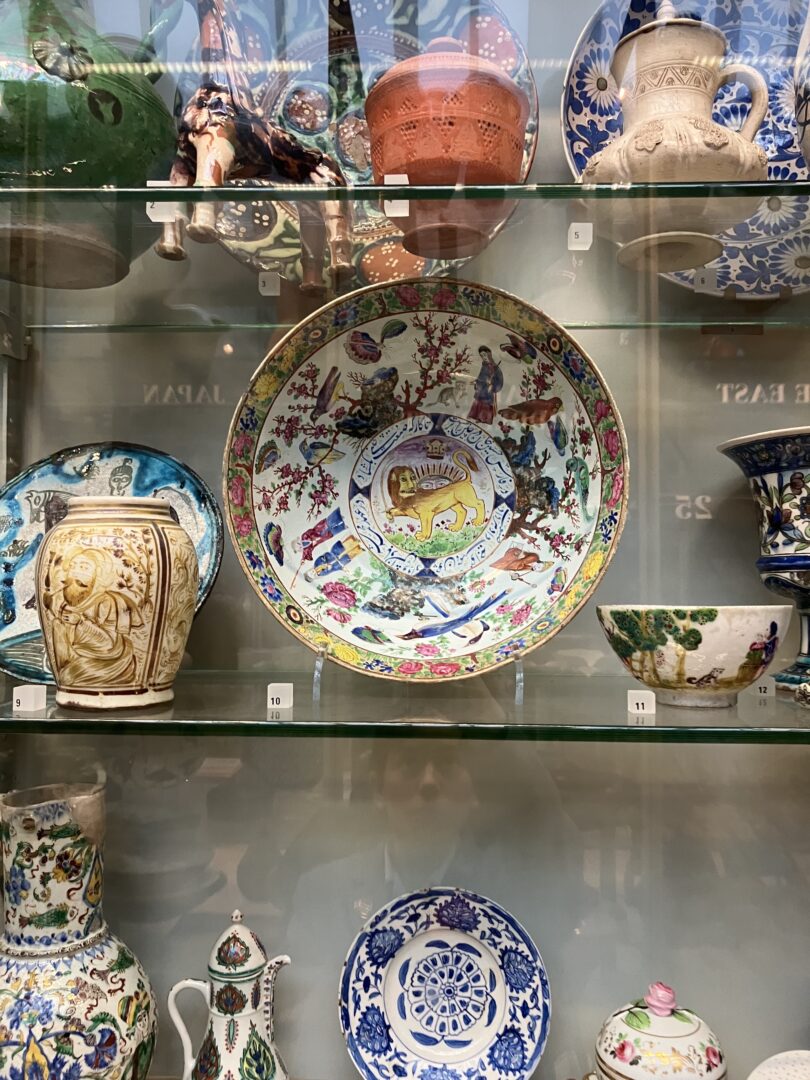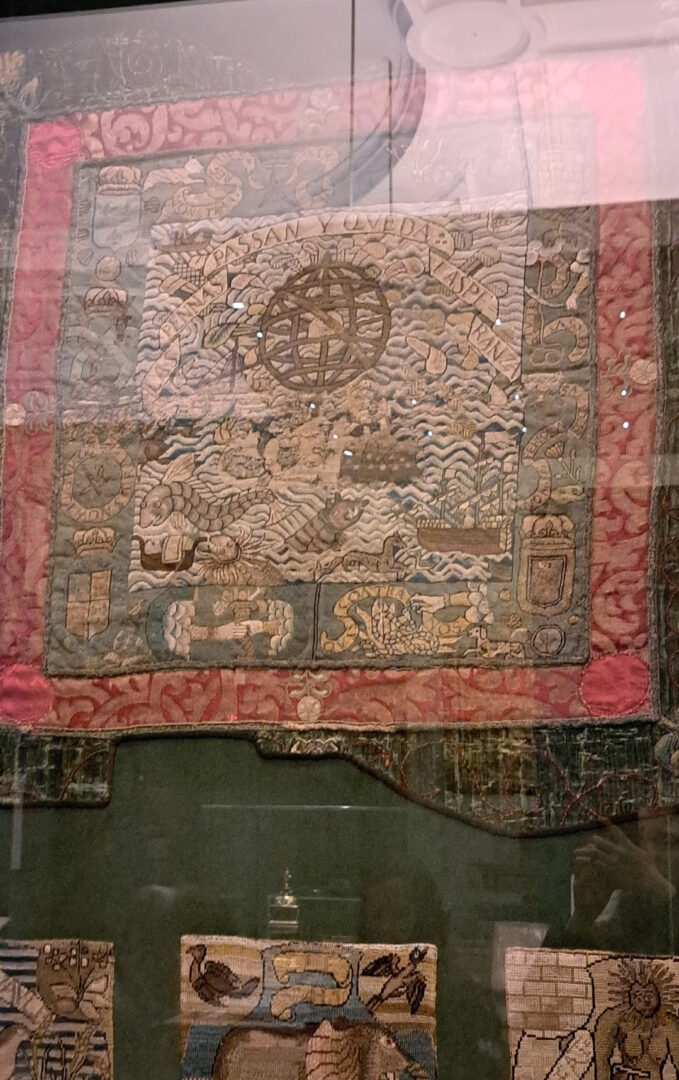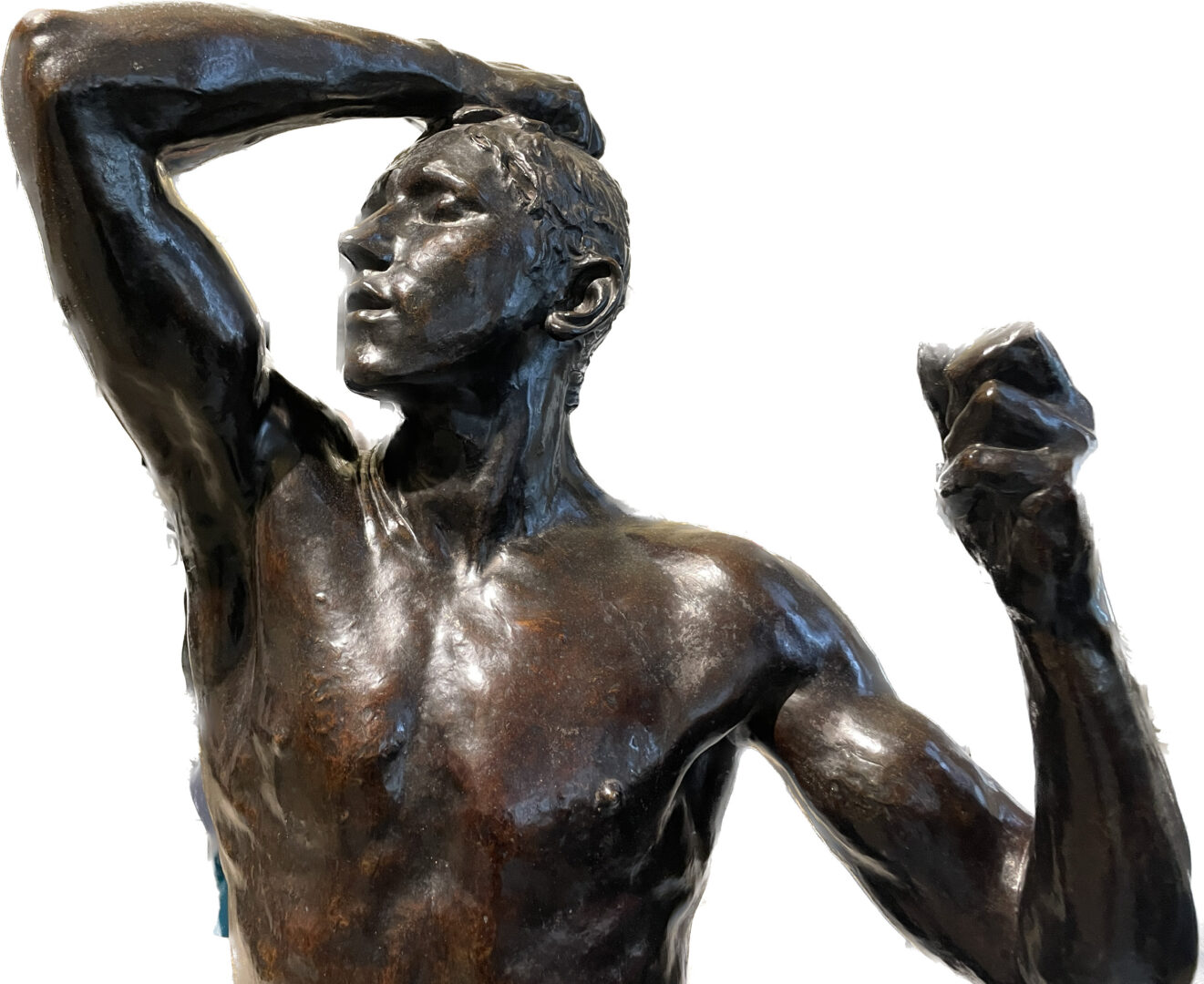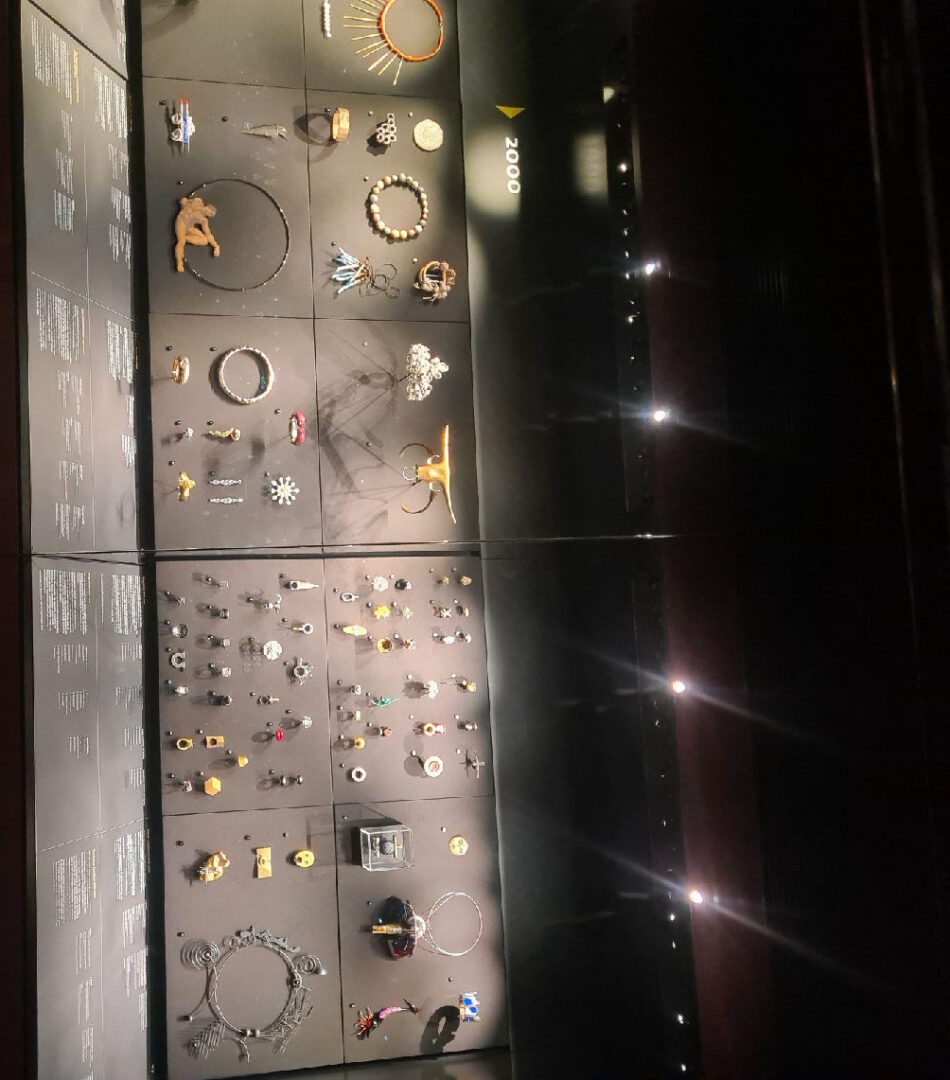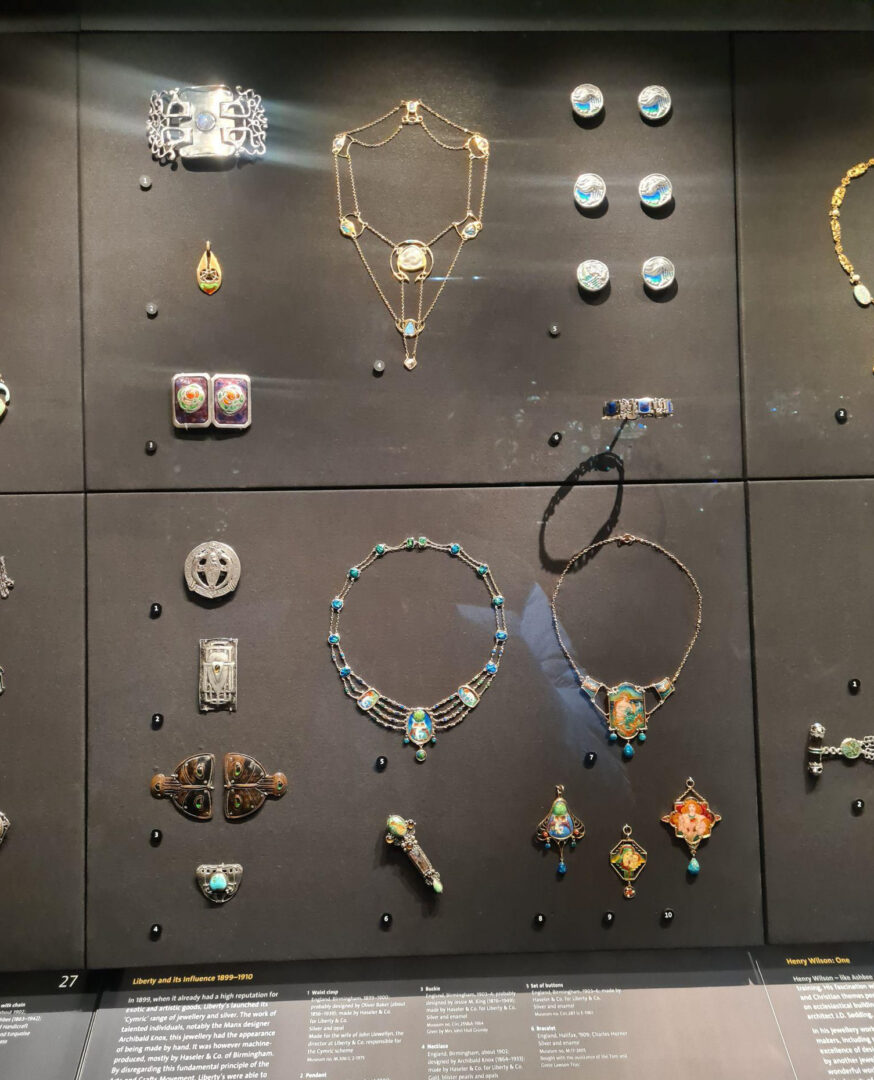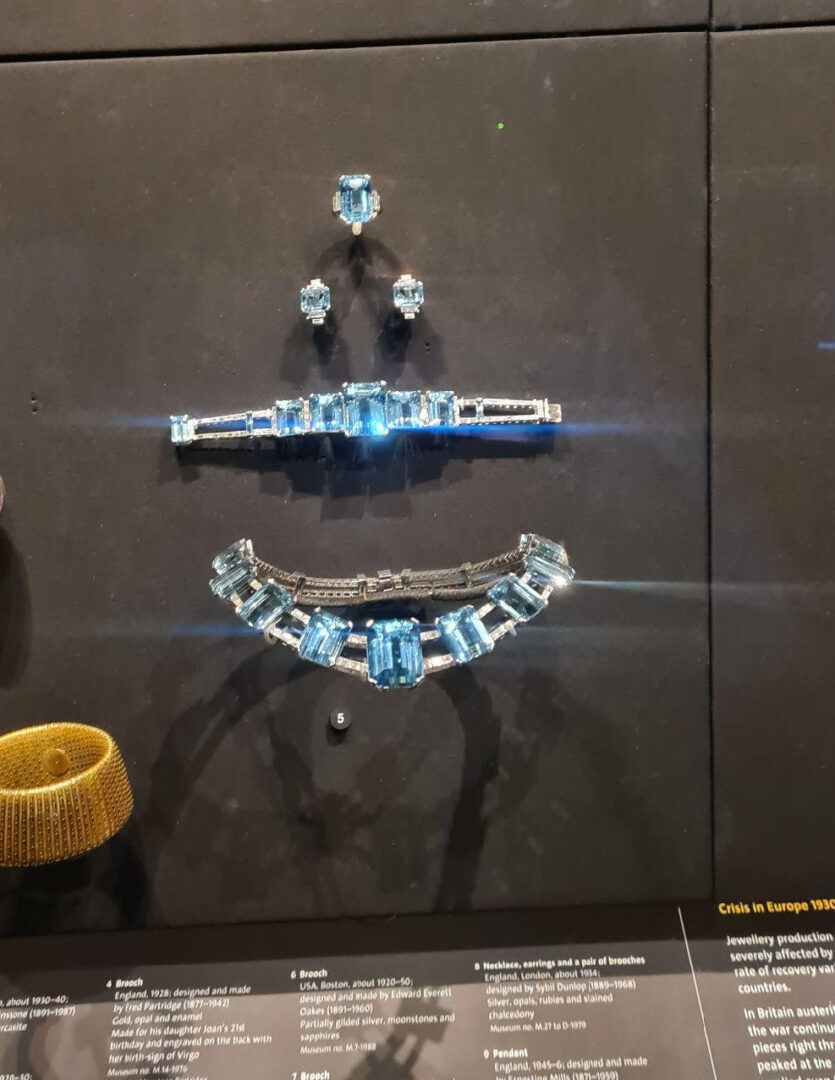Academic Scholars at the V&A
Friday 22 March 2024
A group of Queenswood’s Academic Scholars visited London’s magnificent V&A Museum on Tuesday 12 March. They have been reflecting on the exhibits that they most admired.
ALICE B, YEAR 9
The Hereford Screen (1), made for Hereford Cathedral in 1862. This screen was a star piece in the International Exhibition of 1862 (held in London), and was installed in the Cathedral in 1863. The 11 metre-long, 8 ton screen only took 5 months to build.
Queen Victoria’s Sapphire and Diamond Coronet (2), designed by her husband Prince Albert. It is one of the most important jewels worn by the young queen. Queen Victoria quotes, ‘Albert has such taste, and arranges everything for me about my jewels.’ In 1866, 5 years after Prince Albert’s death, Queen Victoria wore the Coronet, and the jewels remain an ‘enduring symbol of their love.’
CHLOE C, YEAR 9
The academic scholars’ trip was very interesting and there was so much to see and learn with a range of areas from fashion all the way to furniture. I particularly enjoyed the architecture section because I liked seeing the variations of the different countries' classical architectural designs.
This photo is an example of architecture in East Asia (4). One element of this design which I thought was interesting was the crowd of fierce animals and figures on the roofs which are placed there in order to protect people from evil falling from the sky and the dolphin decorations are meant to represent water and therefore avert fire.
ROSE-ELLEN F, YEAR 10
The Column of Trajan (5) stands at the centre of the Roman Forum in Rome, Italy, and was built in the early 2nd century. It was built to commemorate Emperor Trajan’s two successful campaigns against the Dacians.
The Trajan's Column inside the V&A museum is a copy. The cast courts were built to a height of 25 metres, to accommodate the column in two parts.
Trajan’s Column stood out to me the most as of its height and detailed designs on the stones. What impressed me initially was the effort needed to record the detail and create a replica in so much detail in another part of the world on such a scale.
FLORENCE H, YEAR 8
This trinket (6) is commonly known as ‘The Drake Jewel’, due to it being gifted to Sir Francis Drake during the Elizabethan Era. The date inside, when examined closely, does not read as the text inside implies ‘Ano Dm 1575 Regni 20’, meaning that the locket was made in 1575, the 20th year of Queen Elizabeth’s reign, however, the locket has probably actually been restored wrongly in the past, and formerly gave the date 1586.
Inside of the locket, there is a highly damaged lining made of parchment, but it can still show the detailed phoenix on the inside. This bird was the symbol associated with the Queen herself, as a symbol of rebirth and renewal, due to myths that the phoenix died every 500 years and respawned from their own ashes.
On the front are two profile heads, one a presumably African man, the other probably a European woman. The man is shown wearing a mantle worn at the time by Roman emperors and generals, to show the Queen’s wishes of imperialism. These people may be there representing the God and Goddess Saturn and Astrea, both who show peace.
JULIETTE H, YEAR 7
I really enjoyed the trip to the V&A. I particularly enjoyed sitting under Trajan’s column as well as visiting the glass and pottery collections (7). There was lots to see and it was a great trip!
IZZY P, YEAR 8
The patch in the centre (8) is a stitching done by Queen Mary I, Queen of Scots, while she was imprisoned by her cousin, Queen Elizabeth. It’s made up of smaller panels then added to a background. Her emblem of a marigold turning to a sun and a dog makes it clear the work was done by Queen Mary, as it was seen with the royal arms of Scotland, surrounded by The Order of the Thistle.
CHARLOTTE P, YEAR 12
This is a photo of the statue Age of Bronze (9) by Auguste Rodin, and was his first large sculpture that brought Rodin to the public attention. He employed a soldier to model for him, as he found professional models' poses were too conventional. Due to how lifelike the sculpture is, many deemed it to be a cast from life; Rodin had to prove it was his careful observation and immense skill that accounted for the quality of the modelling. This particular sculpture is made from bronze and was cast in Paris by Alexis Rudier. The original is in New York.
In the museum I was able to sit and sketch this statue, and as I began to explore the form and attempt to record the shape and tone on paper, I was in awe of the life-like qualities of the sculpture and of the amazing skills of Rodin. Each muscle of the back and wrinkle were precisely sculpted and are extremely lifelike, and the pained expression on the models face is perfectly replicated, which did make it very difficult to draw, but I will make further attempts!
AMY S, YEAR 9
We enjoyed the extensive jewellery collection (above, 10, 11 and 12). With over 3,000 traditional pieces, this was a very eye-catching room. One of my favourite collections was the aparite. I thought that the aparite stones provided a welcome contrast to the traditional gold and silver pieces. We also saw Queen Victoria’s sapphire and diamond coronet, which had clearly been carefully preserved. Overall, with pieces ranging from 80 BC to the 20th century, this was a very enlightening experience, and one I am sure we will all remember.

